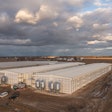
As the overall U.S. egg industry grows, niche markets such as free-range eggs, are growing along with it.
There are 305,255,000 table egg layers in the U.S. as of May 1st, 2024, according to the U.S. Department of Agriculture’s (USDA) most recent 2024 Chicken and Egg report.
According to the USDA’s June 3rd, 2024, Cage-Free Shell Egg report, 122,018,855 table egg layers, approximately 40% of the total flock, in the U.S. are housed in a cage-free environment. Additionally, approximately 66% of all table eggs are sold as shell eggs in the U.S.
According to free-range egg company Happy Egg Co. Chief Operating Officer Jack Luton, outdoor access eggs make up 10.5% of all eggs sold in the U.S., and free-range eggs are a large driver of this, making up 5% of total dozens sold in the U.S. retail egg market.
This means an estimate of 10.65 million layers are currently housed in a free-range environment.
What is happening in the free-range egg market?
According to Luton, the outdoor access category has grown significantly over the past few years and demand for these eggs has doubled in the last four years.
Additionally, while Luton said he was confident that the sector will continue to grow, he said there are potential limitations to this growth, such as legislative changes, supply chain restraints and the constant threat of biosecurity risks.
He added that most free-range eggs are sold primarily through retail to meet the current demand.
“This causes free-range eggs to be available on the wholesale market from time to time, but more often than not, they are difficult to find because many producers are shipping directly to retail to meet the increased demand.”
What is the average cost to build a free-range house with Happy Egg Co.?
“The average cost to build a free range farm can vary from $1M- $1.5M depending on materials and the local value of acreage of land. Generally speaking, these farms are financed through our banking partners. The day-to-day costs of running the farms include things like the amortization of the barn and land costs, the cost of the hen, the specialty formulated diet of feed, utility expenses and farm management expenses.,” Luton said.
Final investments vary depending on other factors such as the current condition of the land and if there is an existing barn, Luton explained.
“We do allow farmers to use converted broiler or broiler breeder houses, however, depending on the state of the barn and the results of our team’s property assessment, it can be more costly than a new build,” he stated.
What is the minimum acreage and labor needed for one free-range house?
Luton said that all Happy Egg farms must provide a minimum of 10 acres, however, 12-15 acres is the ideal amount of space to logistically place a barn, fencing and paths for trucks to enter and exit the property.
In the U.S., free-range layers are required to receive at least two square feet of outdoor space. Pasture raised layers are required to have a minimum of 108 square feet.
Concerning labor needs, Luton said that operating a Happy Egg farm is a full-time job. “Many of our existing farmers say they work around 50-60 hours in the first 6-8 weeks after hens are placed, and after they get into their routine, they work around 40 hours each week.”



















